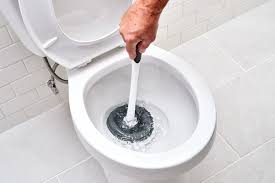Dealing with a clogged toilet is never pleasant, and it can be even more frustrating when your plunger isn't working as expected. If you've found yourself in this situation, you're not alone. Many people struggle with ineffective plunging, often due to common mistakes or underlying issues. In this article, we'll explore why your plunger might not be working on the toilet and provide practical solutions to get things flowing again.First, let's address the basics. A plunger is a simple yet effective tool for clearing toilet clogs, but its success depends on proper technique and the right conditions. Here are some reasons why your plunger might not be working:
- Incorrect Plunger Type: Not all plungers are created equal. A standard cup plunger, often used for sinks, may not create enough suction for a toilet. Instead, use a flange plunger, which is specifically designed for toilets.
- Poor Seal: For a plunger to work, it needs to form a tight seal around the drain hole. If water is leaking around the edges, the suction won't be effective. Ensure the plunger is fully submerged in water and pressed firmly against the toilet bowl.
- Insufficient Water: If there isn't enough water in the bowl, the plunger won't create the necessary pressure. Add water to the bowl until it covers the plunger's rubber cup.
- Weak Plunging Technique: Plunging requires vigorous, consistent motion. Gentle pushes won't dislodge the clog. Use strong, rapid up-and-down movements to create pressure waves.
- Severe Clog: Sometimes, the clog is too deep or stubborn for a plunger alone. In such cases, you may need a toilet auger or professional help.
Now, let's dive deeper into each of these issues and how to fix them.1. Choosing the Right PlungerAs mentioned earlier, using the wrong type of plunger is a common mistake. A flange plunger has an extended rubber flap that fits snugly into the toilet drain, creating a better seal. If you're using a cup plunger, consider upgrading to a flange model for better results.2. Creating a Proper SealA good seal is crucial for effective plunging. Here's how to ensure you get it right:
- Submerge the plunger completely in water before starting.
- Press the plunger down firmly to expel air and create suction.
- Angle the plunger slightly to target the drain hole directly.

If the seal still isn't tight, try applying petroleum jelly around the rim of the plunger to improve suction.3. Adding Enough WaterWithout enough water, the plunger can't generate the necessary pressure to clear the clog. If the water level is low, pour a bucket of water into the bowl until the plunger is submerged. Avoid overflowing the bowl, as this can create a mess.4. Improving Your Plunging TechniquePlunging isn't just about brute force—it's about rhythm and consistency. Follow these steps for optimal results:
- Position the plunger over the drain and push down gently to expel air.
- Pull up sharply to create suction, then push down firmly.
- Repeat this motion rapidly for 15-20 seconds.
- Check if the water drains. If not, repeat the process.
5. Dealing with Stubborn ClogsIf repeated plunging doesn't work, the clog may be too severe. In this case, a toilet auger (also called a closet auger) can help. This tool reaches deeper into the drain to break up or retrieve the blockage. Insert the auger into the drain and turn the handle to dislodge the clog. If the problem persists, it may be time to call a plumber.Preventive MeasuresTo avoid future clogs, consider these tips:
- Avoid flushing non-flushable items like wipes, feminine hygiene products, or excessive toilet paper.
- Use a toilet-friendly drain cleaner periodically to maintain clear pipes.
- Teach household members about proper flushing habits.
When to Call a ProfessionalWhile most clogs can be resolved with a plunger or auger, some situations require professional help. Call a plumber if:
- The toilet frequently clogs without an obvious cause.
- You notice sewage backups in other drains.
- There's a foul odor coming from the toilet.
In conclusion, a plunger not working on the toilet is often due to simple fixes like using the wrong tool or improper technique. By following the steps outlined above, you can tackle most clogs effectively. Remember, prevention is key—adopting good flushing habits can save you from future headaches.
